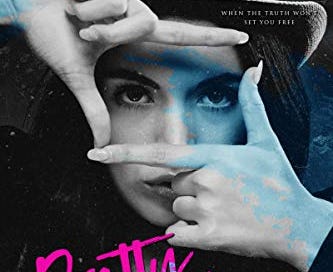
Imagine a world where no one ever voluntarily buys good X. Still, everyone affirms that X is very important, a vital good. If you hold an election, the population unanimously votes in favor of very generous funding for X. Most economists will instantly conclude that X is a public good. It all makes sense: Everyone knows that X is valuable, everyone free rides if given the opportunity, yet everyone eagerly votes to force everyone to support X. Case closed.
I say that economists are dead wrong to close this case. A competing science has an equally compelling theory to fit these facts. The science: psychology. The theory: Social Desirability Bias (SDB). SDB begins with a simple observation: When lies sound better than the truth, people often lie. Wikipedia lists some standard examples:
Personal income and earnings, often inflated when low and deflated when high.
Feelings of low self-worth and/or powerlessness, often denied.
Excretory functions, often approached uncomfortably, if discussed at all.
Compliance with medicinal dosing schedules, often inflated.
Religion, often either avoided or uncomfortably approached.
Patriotism, either inflated or, if denied, done so with a fear of other party’s judgement.
Bigotry and intolerance, often denied, even if it exists within the responder.
Intellectual achievements, often inflated.
Physical appearance, either inflated or deflated
Acts of real or imagined physical violence, often denied.
Indicators of charity or “benevolence,” often inflated.
Illegal acts, often denied.
Example: If you ask people, “Should people help their mothers more?,” they’ll probably respond “yes.” Why? Because “helping mothers” sounds good. It sounds so good, in fact, that no matter how much help mothers receive, almost no one will ever openly advocate helping them less. That’s SDB for you.
Exactly the same applies if you ask people “Should government do more to help the sick?” People will probably say “yes” – no matter how much government already helps the sick. Why? Because “helping the sick” sounds good. If people were as logical as Steve Landsburg, they’d instantly protest, “X being good is a reason to do a lot of X – not a reason to do more X.” But these words sound terrible – so only courageous thinkers like Steve utter them. Psychologically normal humans say the words other people want to hear.
So how precisely is SDB an alternative to the public goods model? Return to the facts in the opening hypothetical. How come no one voluntarily buys X? Because people don’t actually like X – at least not enough to pay for it. Why does everyone praise X? Because praising X sounds good. Why do people unanimously vote for lavish spending on X? Because voting is just a special kind of talking.
Admittedly, it’s hard to believe that everyone praises X even though no one values X. But it’s equally hard to believe that no one is willing to voluntarily pay for X even though everyone values X. (Ever heard of charity?) The opening hypothetical is unrealistically stark, so every model that purports to explain it sounds stilted.
However, if we tone the hypothetical down to realistic levels, both the public goods model and social desirability bias are quite credible. Take teen marijuana use. Lots of people complain about it. Hardly anyone voluntarily pays to discourage it. Yet most democracies heavily persecute it.
Public goods theory provides one explanation: The complainers are largely sincere, but routinely free ride off each other. Government is the solution: It forces these free riders to provide the funds required to realize their dream of marijuana prohibition.
Social desirability bias provides a very different explanation: The complainers barely care despite their pious platitudes. Government is the problem: It forces these otherwise harmless bigmouths to put their money where their mouths are. The result is a costly crusade against a problem most people would prefer to neglect.
Once you start taking the observational equivalence of the public goods model and SDB seriously, you can try to overcome it. More observations are useless, but different observations may do the trick. In particular, the two stories make very different predictions about migration and real estate markets. The public goods model predicts that alleged government solutions will attract migrants and raise rents and housing prices; people crave governments that give them what they say they want. SDB, in contrast, predicts that alleged government solutions will repel migrants and reduce rents and housing prices; people secretly desire governments that take their pious talk with a grain of salt.
So which story is right? My best guess is both. The world is full of public goods problems. But the world is also full of self-righteous posturing. Psychology’s lesson for economics, strangely, is that we should stop taking voters at their word and focus instead on how consumers spend their housing dollars.
The post appeared first on Econlib.










Social desirability claims are a bit of a scam. They’re mostly used as virtue signals by politicians and their proponents. They allow people to claim they’re doing something of value without actually doing anything.
The universe is transactional, despite the claims Keynes et al. Any sort of resource requires the exchange of other resources to obtain. With public goods, we should strive to make this exchange as efficient as possible.
It sure seems to me that the admiration of certain kinds of art is subject to social desirability bias. My rule on what distinguishes art from modern art is whether an accidental swipe of the spatula or brush is noticed or not. But like fashion certain modern art accumulates value. Atonal music similarly can be detected in a second by imagining a random note being inserted and not noticing. But dare you declare it as shit. I suspect superlatives adorning a discussion about wine is entirely bullshit. Then there's libido and imprinting happening at the same time. Everybody calls it love.